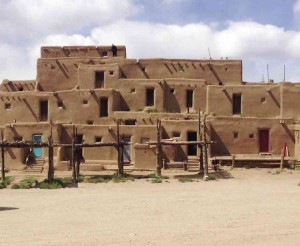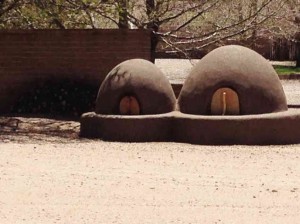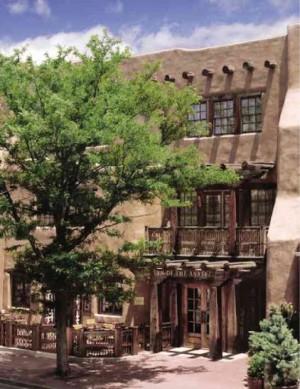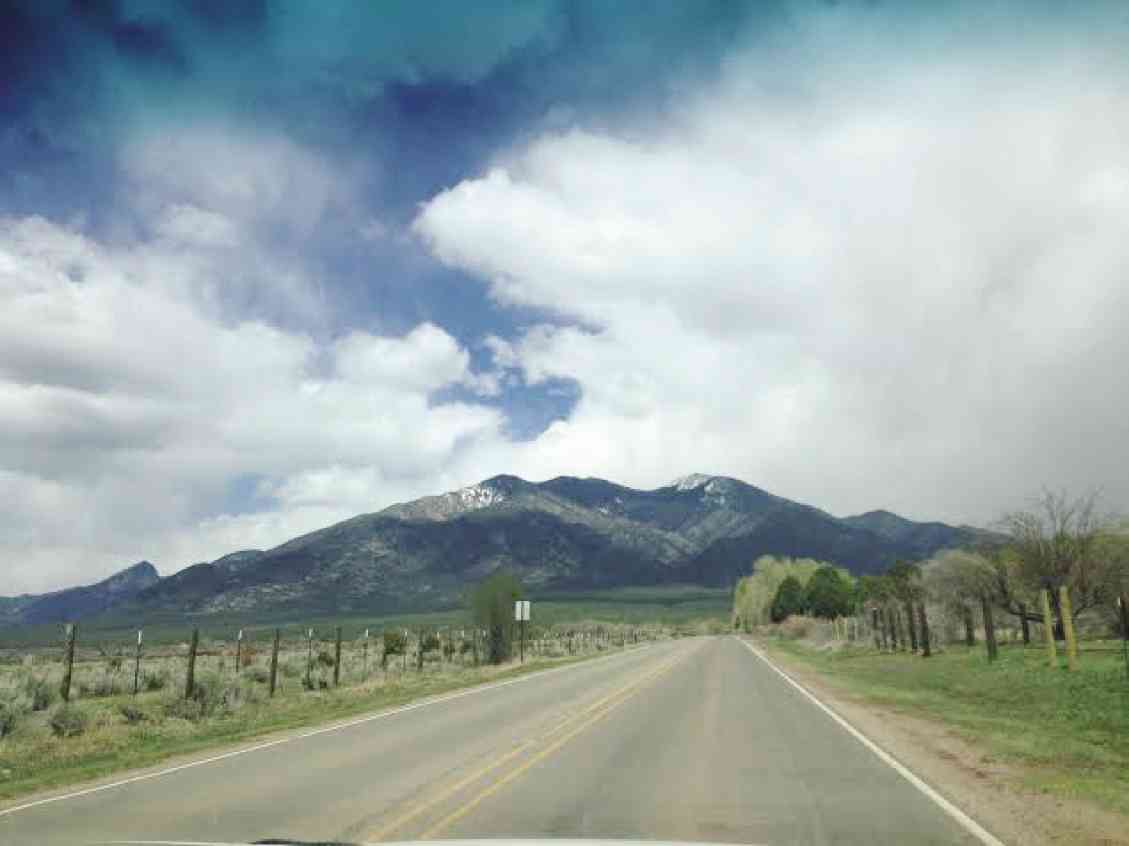
Today’s houses and buildings, including hotels, are built to be earth-friendly. But the Rosewood Inn of the Anasazi in Sante Fe, New Mexico, in the US, has been green for the past 24 years.
It’s because its original owner understood the concerns first raised by the United Nations in 1983—the year the World Commission on Environment and Development (WCED), chaired by Norway’s former Prime Minister Gro Harlem Brundtland, issued the global call for sustainable development.

The commission defined sustainable development as development in which “the needs of the present generation are met without compromising the ability of future generations to meet their own needs.”
The commission officially dissolved in December 1987 after releasing “Our Common Future,” a document that outlined the steps nations must take to preserve the earth’s finite resources.
One of the first to answer WCED’s call was a Santa Fe developer, Robert D. Zimmer, who with his partners built The Inn of the Anasazi out of indigenous materials, including organic paints and sealant, as well as installing water-conserving toilets and natural gas fireplaces.
The hotel—named after the Anasazi, or pueblo-dwelling people, and which predated the world’s first green building, the Commerzbank in Frankfurt, Germany, by seven years—is now owned by the Rosewood Group.
In 2012, the hotel participated in the “Shred-It” paper-shredding and recycling program, saving many trees in the process.
My family and I had the chance to stay at the hotel recently. I asked Sandra Finlay, managing director of the Rosewood Inn of the Anasazi, what inspires her to continue what Zimmer started. She cited what her own country, New Zealand, did: shift from a dairy-driven economy to a tourism-based one when the United Kingdom joined the European Economic Community (EEC) in 1973.

Finlay said New Zealand’s dairy and wool products used to be guaranteed of buyers since it was a member of the (British) Commonwealth of Nations. When the UK joined the EEC, New Zealand “was no longer guaranteed a consistent sale of goods. We’re not like Australia, we don’t have abundant natural resources, so we had to consider tourism as our primary means of income.”
One of the memorable tourism campaigns, she said, was called Be a Tidy Kiwi: “It was about garbage awareness, picking up any piece of trash that you see.”
The program was so effective, it became a habit for New Zealanders to naturally dispose of waste in a responsible manner. Finlay admitted that even now, when she walks along the street and sees a cigarette packet or piece of paper on the floor, a voice in her head says: “Be a tidy Kiwi! Pick it up! Be a tidy Kiwi!”
As she pointed out, “It’s all about building consciousness and awareness, and if we’re able to do that in the work environment, people will go home and do it.”
Adobe
The Inn of the Anasazi’s overall design is based on New Mexico’s Native American adobe heritage. In the hot deserts of the southwestern states, typical building materials such as lumber and stone are scarce. The natives instead used the most abundant material they had access to, adobe.

An adobe brick is made of clay mixed with water and a binder such as dung or straw.
Adobe buildings have long been used by Native Americans in arid regions. The bricks remain fairly cool and, if well-maintained, last indefinitely.
Adobe using straw as a binder must be protected from moisture to prevent it from disintegrating; after a period of rains, any cracks that develop must be repaired at once.
Modern adobes, which use synthetic binders as opposed to organic ones, do not have this problem. While the hotel is an example of a modern adobe building, its design and architecture took after the ancient Anasazi ruins, as well as existing adobe structures like the famous Taos Pueblo in Taos, New Mexico.
The Taos Pueblo is considered the oldest inhabited community in the US. Native American legends and oral history claim its existence dates back to the beginning of creation itself.
Most archeologists however, believe it was built between 1000 and 1450, when natives migrated from the Four Corners region—the intersection of Colorado, New Mexico, Utah and Arizona—and settled along the Rio Grande.

The dwellings in the Four Corners region were inhabited largely by the Anasazi. But a long drought may have forced them to move to the Rio Grande, where water supply was more dependable.
Throughout its early years, the Taos Pueblo was a central point of trade between the native populations along the Rio Grande and their neighbors to the northeast, the Plains Tribes. The Pueblo structures themselves were built with the Taos peoples’ own traditional adobe method.
This, as well as the Taos language, Tawi, is a closely guarded secret of tribal members. The Pueblo also maintains a no-running-water and no-electricity rule within the sacred village.
For these reasons, the Taos community is known for being one of the most private, secretive and conservative towns in the US despite being a Unesco World Heritage Site.
Xenophobic
Tai, a 19-year-old boy who grew up in the Taos Pueblo, served as my family’s tour guide. While giving us a detailed tour of the Pueblo, he also told us anecdotes one would not normally find in a history book: “In the past, our houses had no doors. Instead, we had ladders that led to holes in the roofs. When raiders from other tribes like the Apache came, we pulled them up so they could not reach our women and children.”
He added that raiders would attempt to destroy all remnants of the rival tribe’s culture as a way of wiping out enemies.
“Our mud walls kept the Apache out, it kept our people and culture safe. When European settlers came, we pulled in our ladders like we always did, but our walls could not stop them,” said Tai.

That’s when I understood why the Taos people, and Native Americans in general, had been reclusive and xenophobic. For most of their history, their encounters with outsiders had been in the form of conquest and subjugation. They do not wish to share their language and customs with the outside world, because they believe it has already taken enough of what is theirs.
Asked about his future plans, Tai said he wanted to go to school for a while to study. “I was considering working for the state police or even the FBI, but I realized there are already many people working there. Many brave men and women dedicate their lives serving their people that way, so I am not needed there. It is here [in the Taos Pueblo] where I am needed, so after my studies I plan to come back and serve as a tribal leader.”
Tai’s decision to stay and serve his community is admirable. It is relevant in the way Filipino youth choose to leave their local communities and work in the cities.
The Banaue Rice Terraces, for example, have been deteriorating for the past several years as young Ifugaos leave to find work in urbanized areas.
This has been the same case in the country’s other rural regions where young people whose ancestors toiled Philippine soil for generations now find farming less and less attractive.
But they cannot be blamed entirely for their career choices; the reason Tai wants to stay behind is because the Taos Pueblo and its surrounding lands are run by his own people, not by wealthy hacienderos who have never sown a single grain of rice in their entire lives.
Cultural heritage
Santa Fe has been drawing tourists for its unique history and ambiance. They flock to this capital city of New Mexico mainly for its famous adobe houses.
It was necessary for the government to set specific regulations to ensure the city’s cultural heritage remains intact. Santa Fe’s Historic District Review Board has jurisdiction over the five districts which comprise 20 percent of the city. It is in these areas, located at the center and east sides of the city, that building codes are the strictest.
In a residential home at the east side, for instance, windows must not exceed 30 inches diagonally. Houses in the historic district are not required to be authentic adobe, but they must adhere to traditional adobe aesthetic.
The Philippines can learn many things from New Mexico. Conservation and the art of efficiently using resources have been embedded into the system of every New Mexican. Filipinos are fortunate to have an abundance of natural resources. But we must learn to use them to their fullest potential, to ensure the benefits trickle down to the masses and everyone benefits from this great wealth.









































